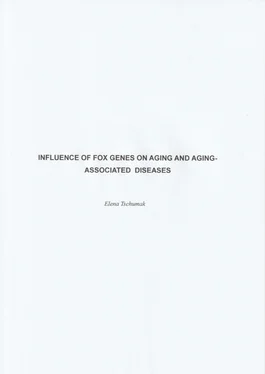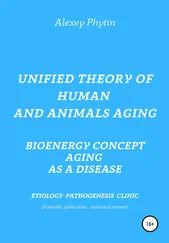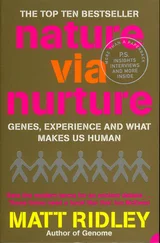According to Blagosklonny, 2012 sirtuins negatively regulate rDNA recombination (Kaeberlein et al., 1999) and number of extrachromosomal rDNA circles. (Stinclair and Guarente, 1997) Sir.2 improves FOXO ortholog, DAF-16 function in worms possibly via IIS (Tissenbaum et al., 2001) and in flies via Rpd3 deacetylation. (Rogina and Helfand, 2004)
Rapamycin inhibits mTOR and rejuvenates cardiac and skeletal muscles via increasing NAD+ level (Cantó et al., 2012)and improves aged immune system (Mannick et al., 2014). It also activates Sirtuin via STACs. STACs are impaired by TGF-β, the levels of which increases during aging in mouse and human sera. Another possibly aging relevant effect of Rapamycin is inhibition of S6K1 (Selman et al., 2009 ). Similar effect on increases longevity has nutrient supplementation with spermidine and polyamine-production of gut flora in mice (Tofalo et al., 2019; Matsumoto et al., 2011, 2007)
According to „Six plant extracts delay yeast chronological aging through different signalling pathways“ Lutchman et al., 2016 Cimicifuga via SNF1 (TORC1 inhibition), Ginkgo biloba via PKA inhibition, Valeriana officinalis L. via PKA pathway, Apium graveolens L. and Salix alba via PKH1/2-sensitive form of Sch9 inhibition as well as Passiflora incarnata L, caffeine, myriocin, spermidine, cryptotanshinone, rapamycin, lithocholic acid, resveratrol and methionine sulfoxide positively effects Saccharomyces cerevisiae aging . (de Cabo et al., 2014; Eisenberget al., 2009 Fontanaet al., 2010; Goldberget al., 2010, 2009; Hubbard and Sinclair, 2014; Kaeberlein, 2010; Leonov et al., 2015; Minois et al., 2011; Huang et al., 2014; Morselli et al., 2009; Arlia-Ciommo et al., 2014; Burstein et al., 2012; Lutchman et al., 2016)
SNF5 component SWI/SNF acts in opposite to polycomb-mediated PcG silencing in Drosophila and to p16INK4a silencing in mammals, leads to increased p16 level and is decreased in cancer cells. (Oruetxebarria et al., 2004)
Further natural aging relevant compounds describe McCubrey et al. 2017 in “Effects of resveratrol, curcumin, berberine and other nutraceuticals on aging, cancer development, cancer stem cells and microRNAs”
Rapamycin also protects again Alzheimer's disease, Parkinson and cardiomyopathy via mTOR (Cai Z and Yan LJ, 2013; Bitto et al., 2015). TOR overlaps with metformin, which increases insulin sensitivity, activates AMPK and inhibits IGF-1 signalling65. H2Ss is also a goal of metformin. (Anisimov, 2010; Awartani, 2002). Nestler et al., 2002 describe that Biguanide have positive effect on ovulation and gynaecological diseases. It also improves immune response (Dilman ,1994), has a positive effect on N-nitrosobis-(2-oxopropyl) induced pancreatic cancer malignancies (Schneider, 2001), inhibits lung carcinogenesis induced by tobacco carcinogen (Memmott et al., 2010) and benzo(a)pyrene-induced skin and cervico-vaginal carcinogenesis in mice as well as on melatonin level (Deriabina et al., 2010) .Phenformin improves immunity and inhibits carcinogenesis in mice (Vinnitski and Iakumenko, 1981) and can inhibit carcinogenesis induced by X-rays in rats. (Anisimov et al., 1982) Diabenol® showed anticancerogenic effects, eg. in colon cancer, improved oestrous function, decreased the size of mammary adenocarcinoma metastases into the lung, multiplicity of all colon tumors in mice. (Popovich et al., 2005)
Metformin as buformin positively effect aging relevant glycation end products (Kiho et al., 2005; Diamanti-Kandarakis et al., 2007) Therefore pentosidine is an aging-marker (Ulrich, 2001)
According to Anisimov et al., 2013; Perridon et al., 2016 ; Wu et al., 2012 various H2S upregulates SIRT, which can inhibit human colon adenocarcinoma. H2S also improves mitochondrial function and antioxidants level.( Kimura et al., 2010, 2004) It happens via ROS-scavengers (Sun et al., 2012) and S-sulfhydration of p66Shc (Xie et al., 2014) glutathione peroxidase, superoxide dismutase. H2S stabilize and activates p21 (van Deursen et al., 2014) It also effects anti-oxidative transcription factor Nrf2 activation via S-sulfhydration of Keap1 (Yang et al., 2013), induced the S-sulfhydration of MEK1 and protects against human platelet aggregation in vitro ( Gao et al., 2015) According to Review „The role of hydro gen sulphide in aging and age-related pathologies“ Bernard et al., 2016, H2S has positive effects of on genome stability via increasing MEK1 S-sulfhydration, ERK1/2 and PARP-1 activity leading to the activation of DNA damage repair mechanisms and protection from cellular senescence.(Zhao et al., 2014)
The CSE/H2S pathway is important in genome stability and cell proliferation due to downregulation of ERK1/2 activity: its inhibition in hepatoma cells decreases their proliferation and increases ROS production, mitochondrial disruption, DNA damage and apoptosis. H2S inhibition activates p53, p21, Bax and other pro-apoptotic genes (Pan et al., 2014) and protects against oxidative damage of Alzheimer's patients . H2S also effects telomere maintenance and influences expression and activity of SIRT1 (López‐Otín et al., 2013; Zhang et al., 2014; Li et al., 2014), IL-6, TNF-α (Rios et al., 2015; Zhang et al., 2013) and methylation via CSE/H2S. (Li et al., 2015; Kamatet all., 2015) NaHS inhibits glycation in humans. (Houtkooper et al., 2010)
H2S impairs the insulin/IGF-1 pathway in neuroblastoma (Liu et al., 2013) and blocks nutrient-sensing mTOR pathway and protein aggregations. (Talaei et al., 2013) H2S inhibits FOXO1 and FOXO3 phosphorylation and is an endogenous regulator of PTEN, the main antagonist of the PI3K-Akt axis in the insulin/IGF-1 signal pathway. The insulin/IGF1 signalling pathway and the FOXO transcription factors modulate the expression of pro-longevity genes (Lee et al., 2003 Oh et al., 2006 Murphy et al., 2003) Marjolein et al., 2017 also demonstrated Foxa2- FOXO4-p53 interaction and its role in cell aging. Its overexpression has been reported in metastases of prostate cancer (Mirosevich et al., 2006) and in colorectal carcinoma (Lehner et al., 2007), while in thyroid cancer cells Foxa2 suppression has been observed. (Akag et al., 2008)
Other FOX family genes are involved in apoptosis, cell invasion and migration, cellular development, metabolism, cell proliferation and development. (Myatt et al., 2007)
Their mutations can lead to cellular cancerization. (Kalin et al., 2006), (Paik et al., 2007)
Several other publications also confirmed the relationship between FoxP expression and cell proliferative, oncological and inflammatory processes as well as the relationship between other FOX genes and vitiligo (FOXD3), ptosis (FOXL2), adipose disease (FoxY2) (Zhou et al. 2018) and lymphoedema-associated autosomal dominant lymphedema-distichiasis syndrome (Fang et al., 2000).
FOXG1 plays a role in apoptosis but is also expressed in the placenta. (Entrez Gene: FOXG1B forkhead box G1B FoxF2).
Among other, FOXJ1 regulates the immune system. (Lin et al., 2005)
FOXA2 influences aging relevant changes in nuclear lamina and increases the lamin B1- and aberrant prelamin A isoform (called Progerin)-level (Bochkis et al., 2014; Scaffidi et al., 2006).
FOXM1B, the „fountain of youth gene“, stimulates tissue growth. (Laoukili et al., 2005; Wierstra and Alves, 2007) and caloric restriction effect on aging can happen via FOXL2 and Foxa2 (hepatocyte nuclear factor 3-beta, HNF3b).
Foxa2 among others effects dopaminergic neurons (its mutation contributes to locomotor deficits in animals that remember the human Parkinson's disease (Kittappa et al., 2007; Arenas, 2008; Lin et al., 2009). It also influences sleep through melanin-concentrating hormone (MCH) and orexin (which also plays a role in alcohol dependence).
FOXP3 importance for carcinogenesis The tumor suppressor gene p53 increases Foxp3 expression by binding directly to the its promoter region of the conserved non-coding DNA sequence CNS-2. (Kawashima et al., 2013) P53 may not only play its immunosuppressive but also its anticarcinogenic role through FOXP3 activation. As already mentioned, protooncogene p53 plays an important role in aging and aging relevant diseases.(Reinhardt And Schumacher, 2012; Carrasco‐Garcia et al., 2017; Nicolai et al., 2015) p53 controls ROS in connection with expression of GLS2 via Tap63. p53 plays a role in apoptosis (Li et al., 2014) especially with the help of mitochondrial pathway of PUMA (Westphal et al., 2014; Yu et al., 2003) and with the help of pro-apoptotic proteins.(Zahran et al., 2014) e.g., via NOXA (Cuadrado Cuadrado et al.,2007) p53 also activates tumor metastasis via SNAI2 (Wu et al., 2005). Further ATP-dependent chromatin remodeler p53 interacts with CSB, which is important for DNA repair.(Lake et al., 2011) It would be interesting to investigate whether and to what extent FOXP3 is involved in a variety of carcinogenic diseases with T inflammatory response.
Читать дальше










![John Bruce - The Lettsomian Lectures on Diseases and Disorders of the Heart and Arteries in Middle and Advanced Life [1900-1901]](/books/749387/john-bruce-the-lettsomian-lectures-on-diseases-and-disorders-of-the-heart-and-arteries-in-middle-and-advanced-life-1900-1901-thumb.webp)

